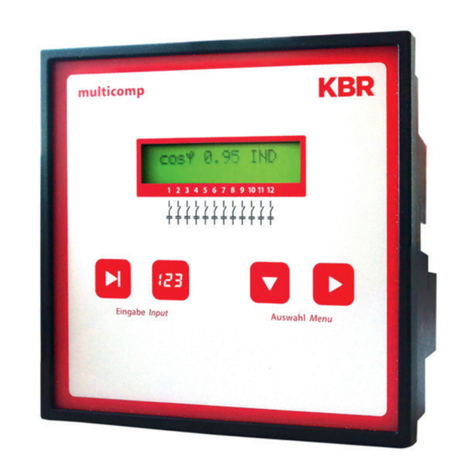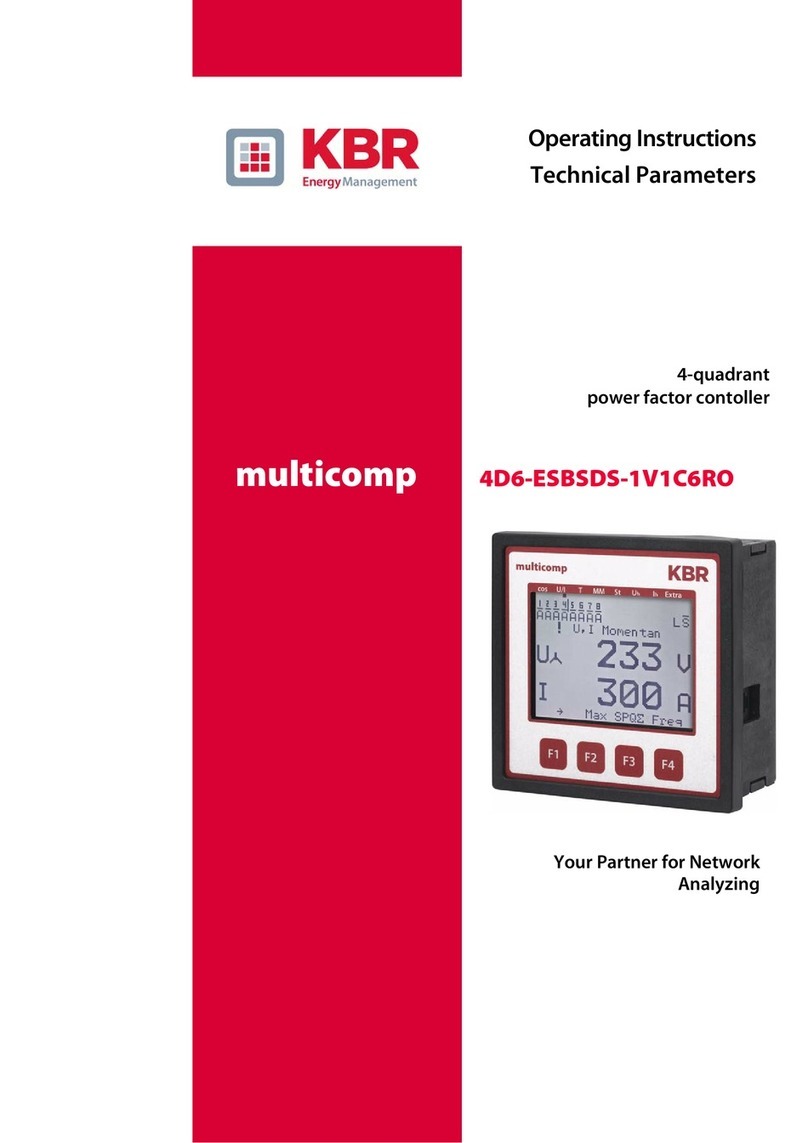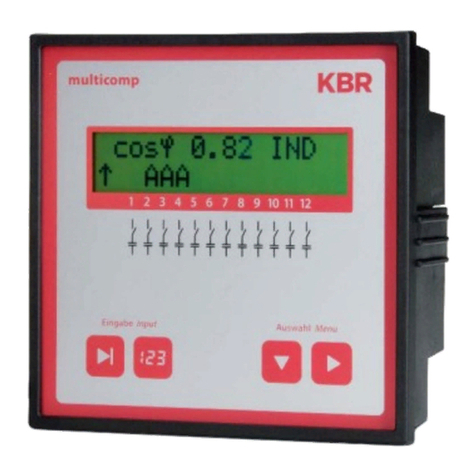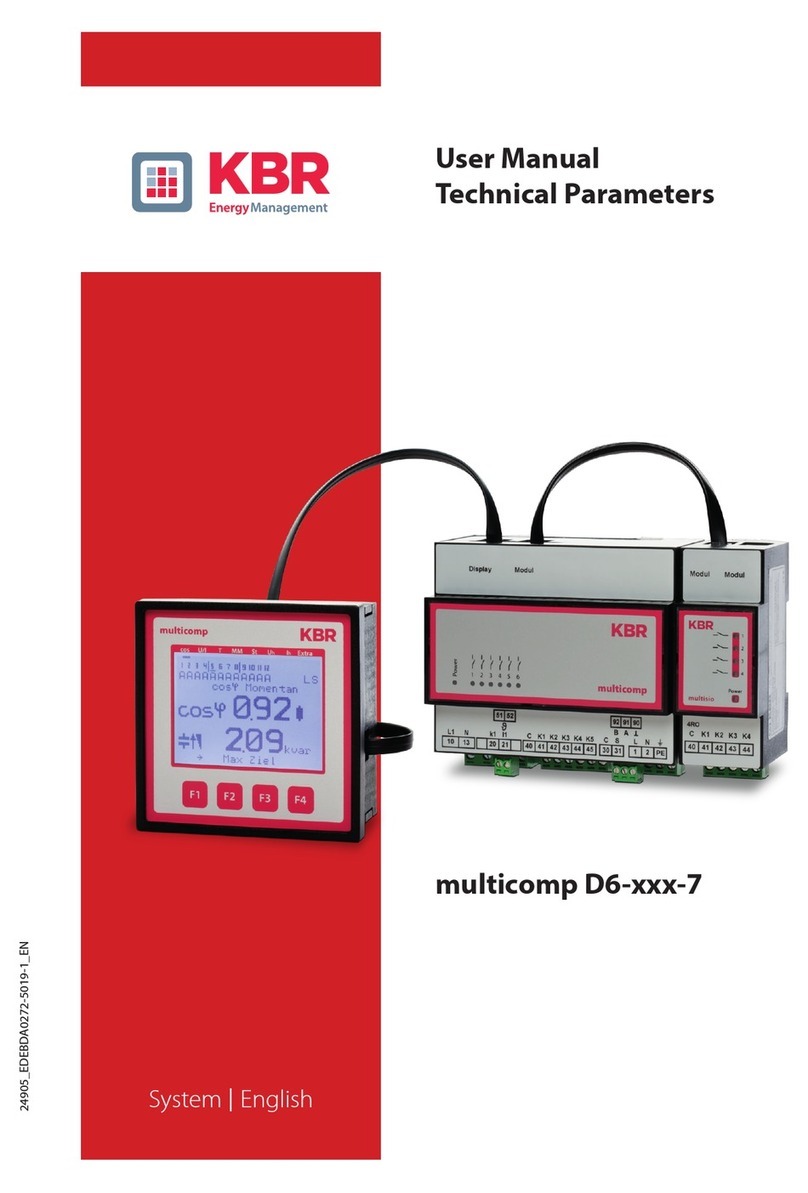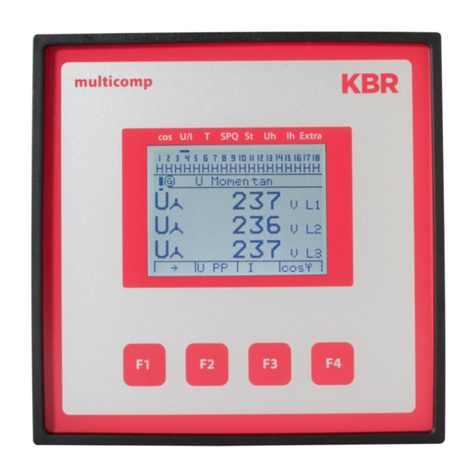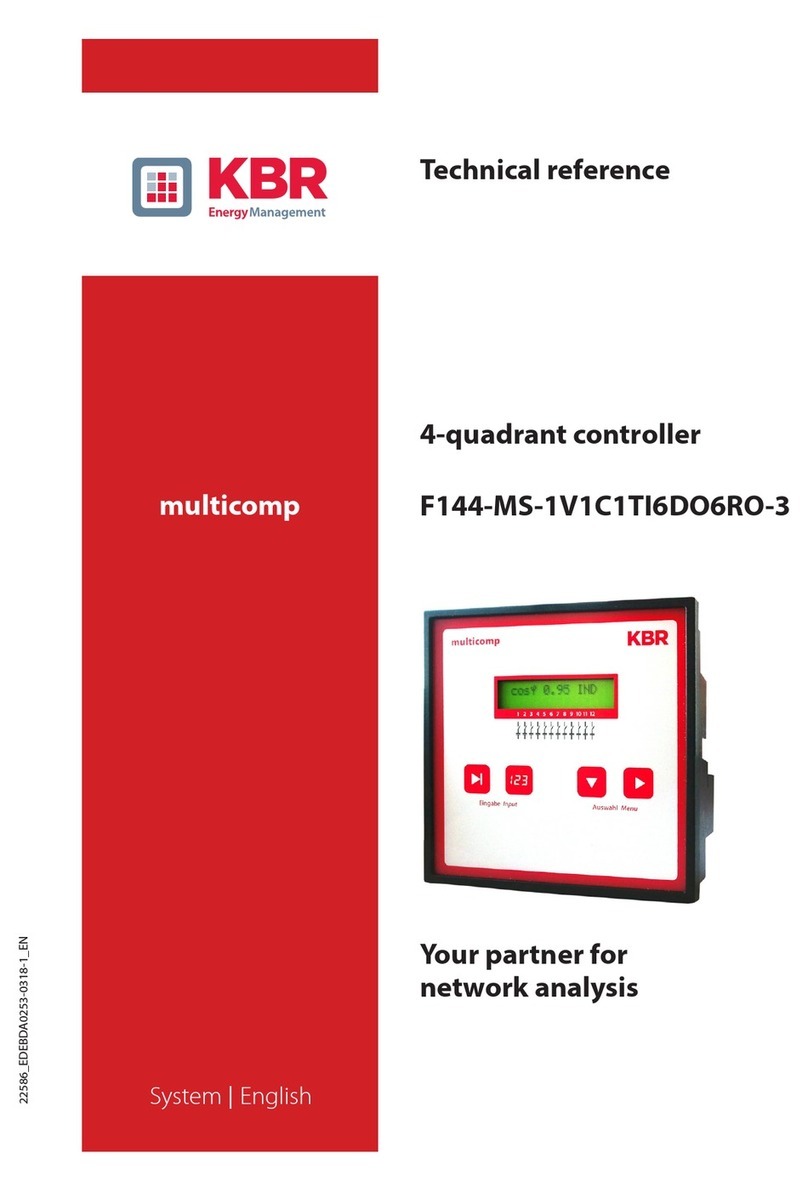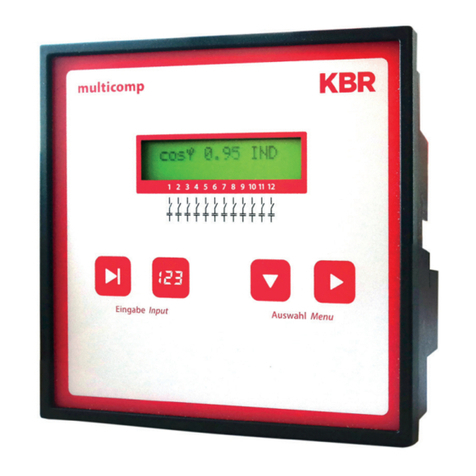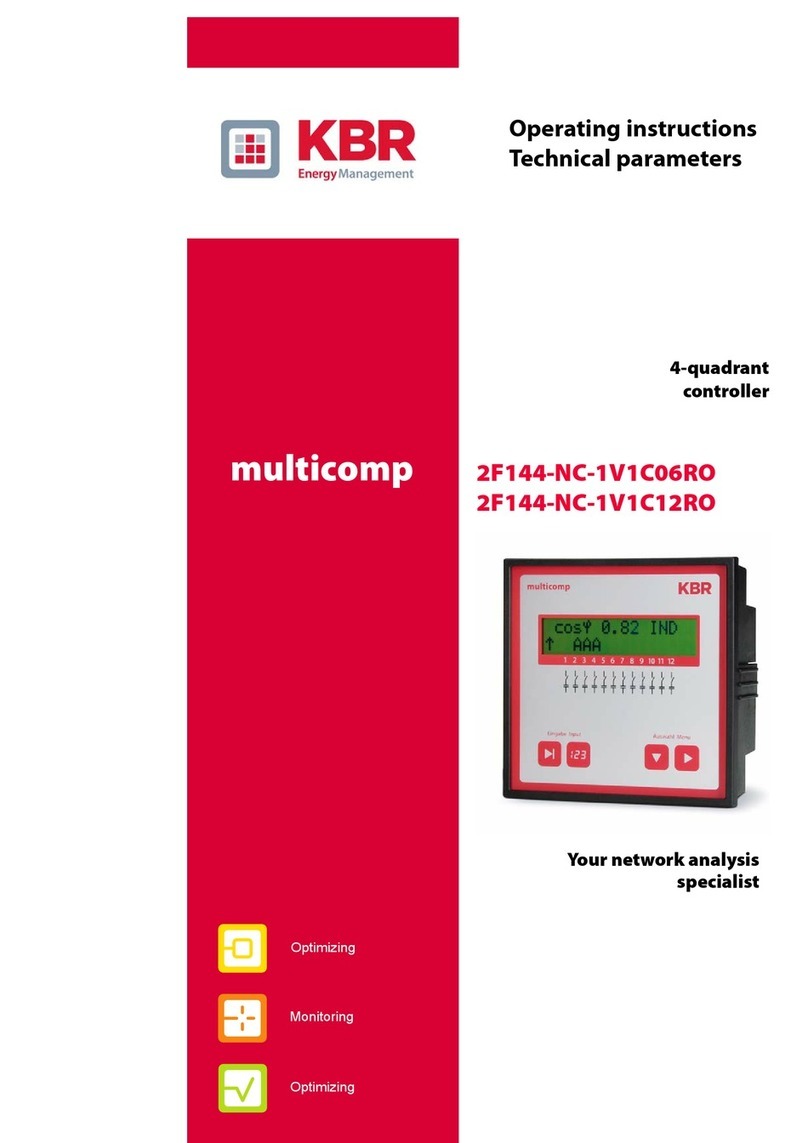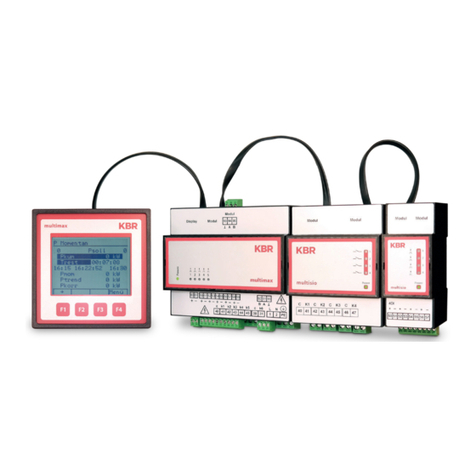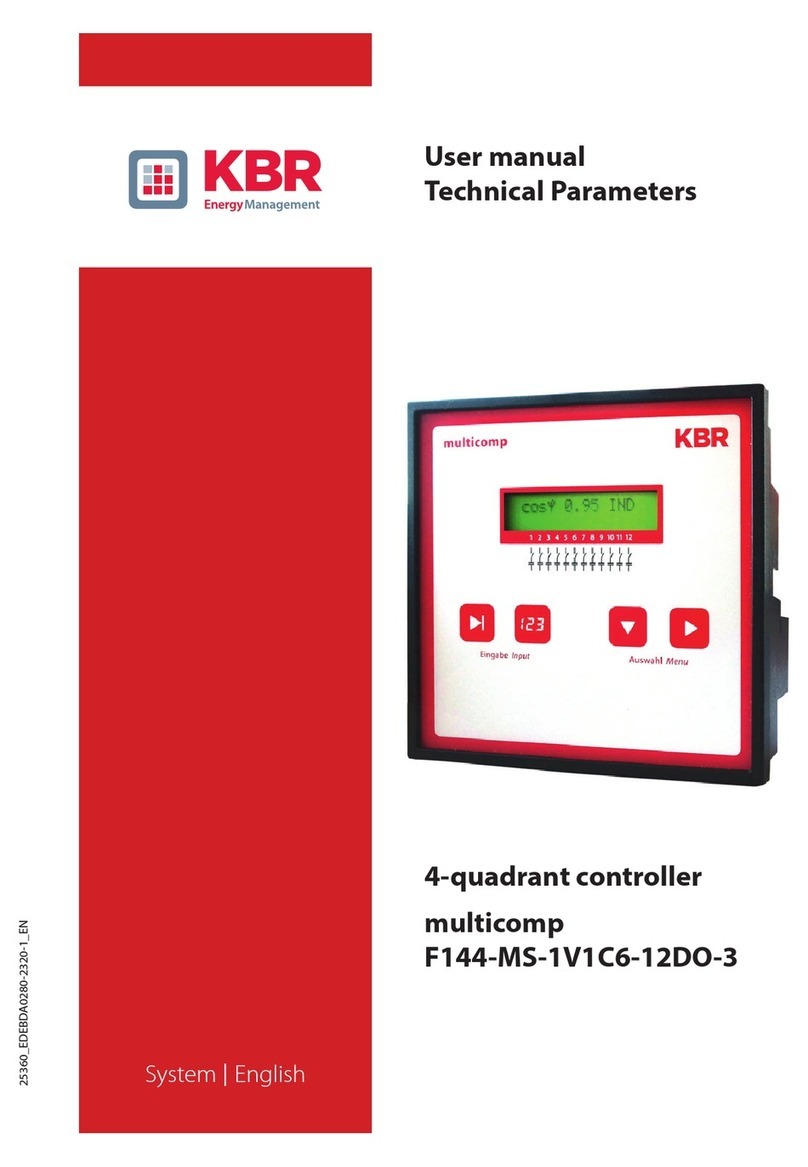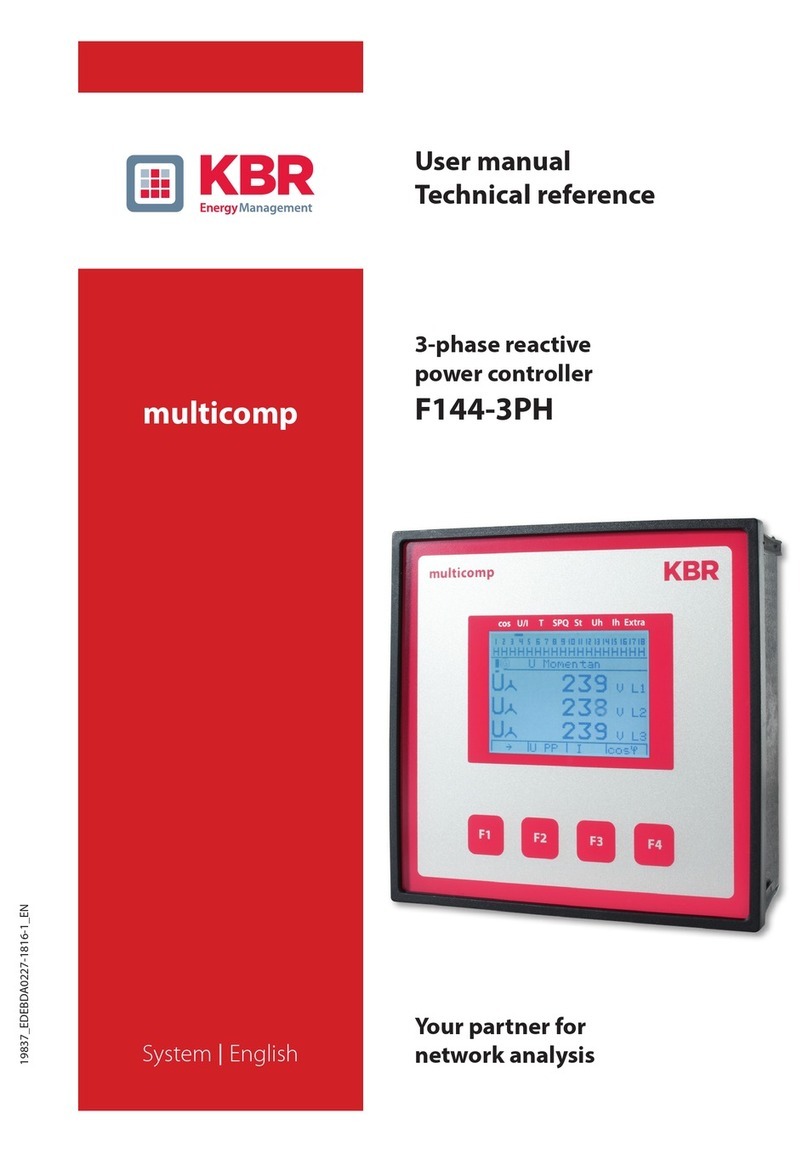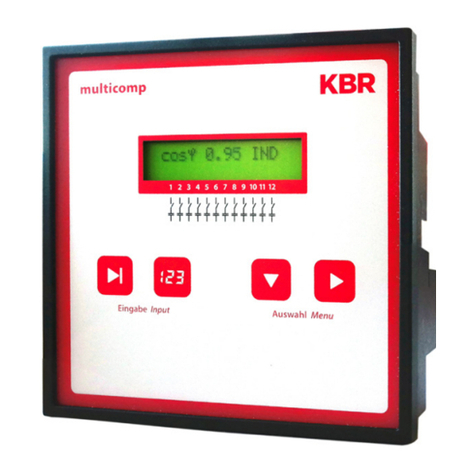
V7.00
24449_EDEKZA0031-2619-1_DE-EN
10
3.1 Controller not precongured
If an uncongured controller is to be started up, the following procedure has to be per-
formed step by step.
1. Conguring additional modules
(multisio D2-1T2RO, multisio D2-4RO, multisio D2-4CI and multimess 14)
If there are no additional temperature, relay or induced current measuring modules, this
step can be skipped. To congure additional modules, connect them and the supplied
bus line to the basic module. The additional modules can then be activated individually
using a scan mode, which has to be triggered via the basic module‘s operating panel
and the DIP switches or scan buttons on the additional module. If the compensation unit
consists of several cabinets, the correct cabinet assignment has to be set up.
Detailed instructions for this step are given in chapter Settings under Modules / Display
submenu.
2. Conguring current transformer values
For the compensation controller to function properly, all current transformer parameters
have to be set correctly. Primary and secondary current of the transformer have to be set.
These parameters can be read on the nameplate of the current transformer. In addition,
the phase assignment of the transformer has to be set correctly. In the controller, the
phase (L1, L2, L3) in which the current transformer is integrated has to be set.
You can nd more detailed information on this topic in chapter Start-up under Transfor-
mer settings submenu.
3. Setting target cosine:
You can ask your energy supply company for the target cosine, which should be set up
at this point. The target cosine is by default set to 0.95 inductive (see chapter Default
settings).
You can nd more detailed information on this topic in chapter Start-up under Target
cosine submenu.
